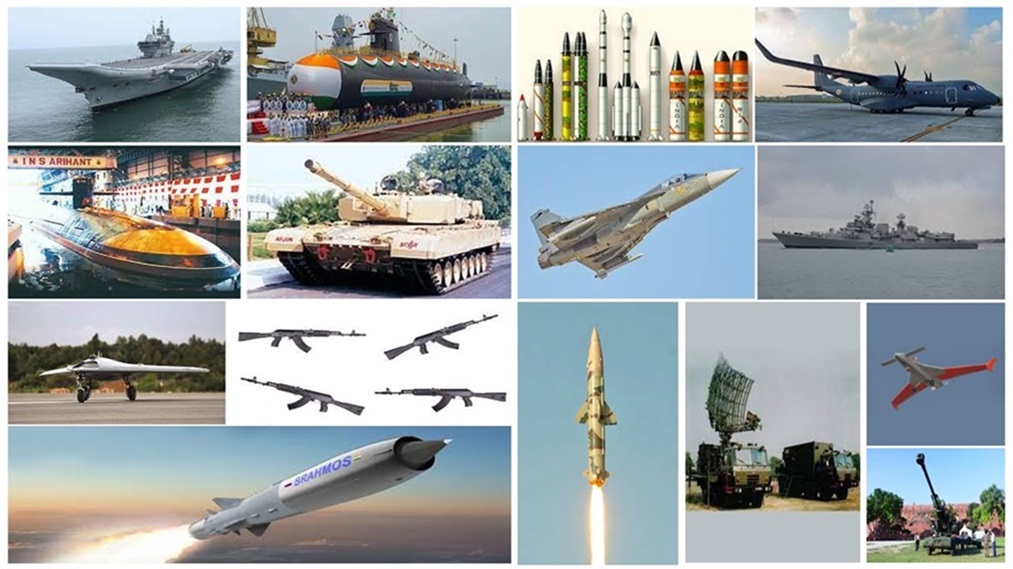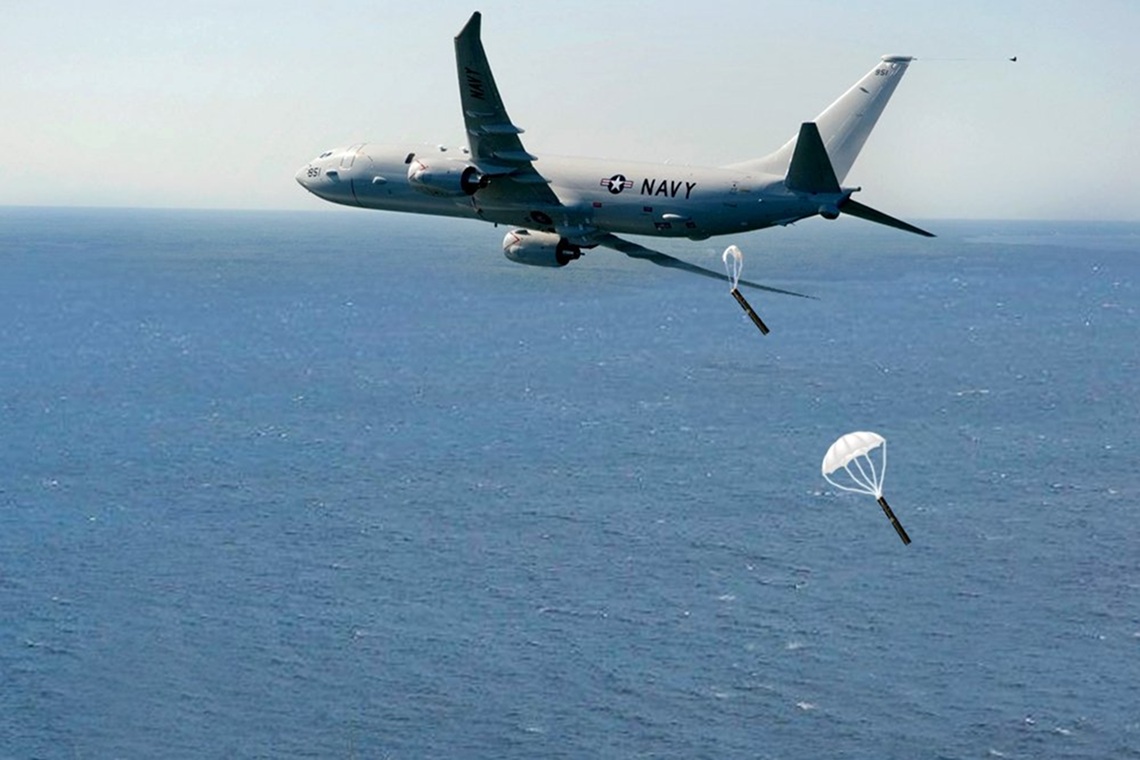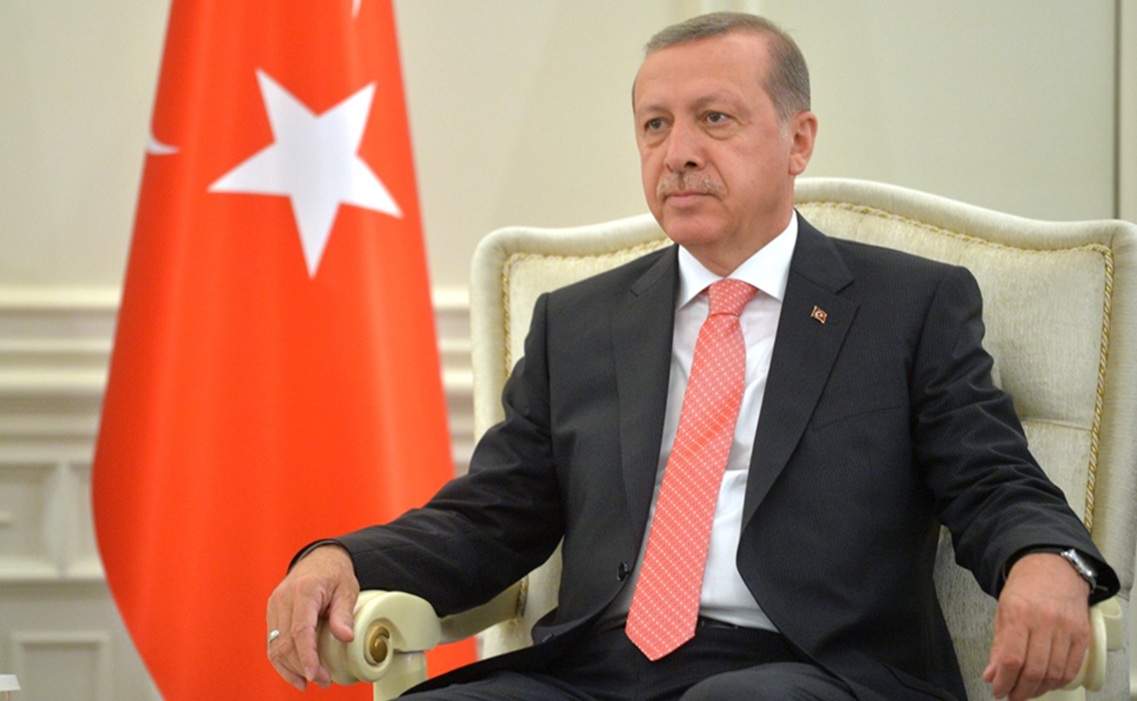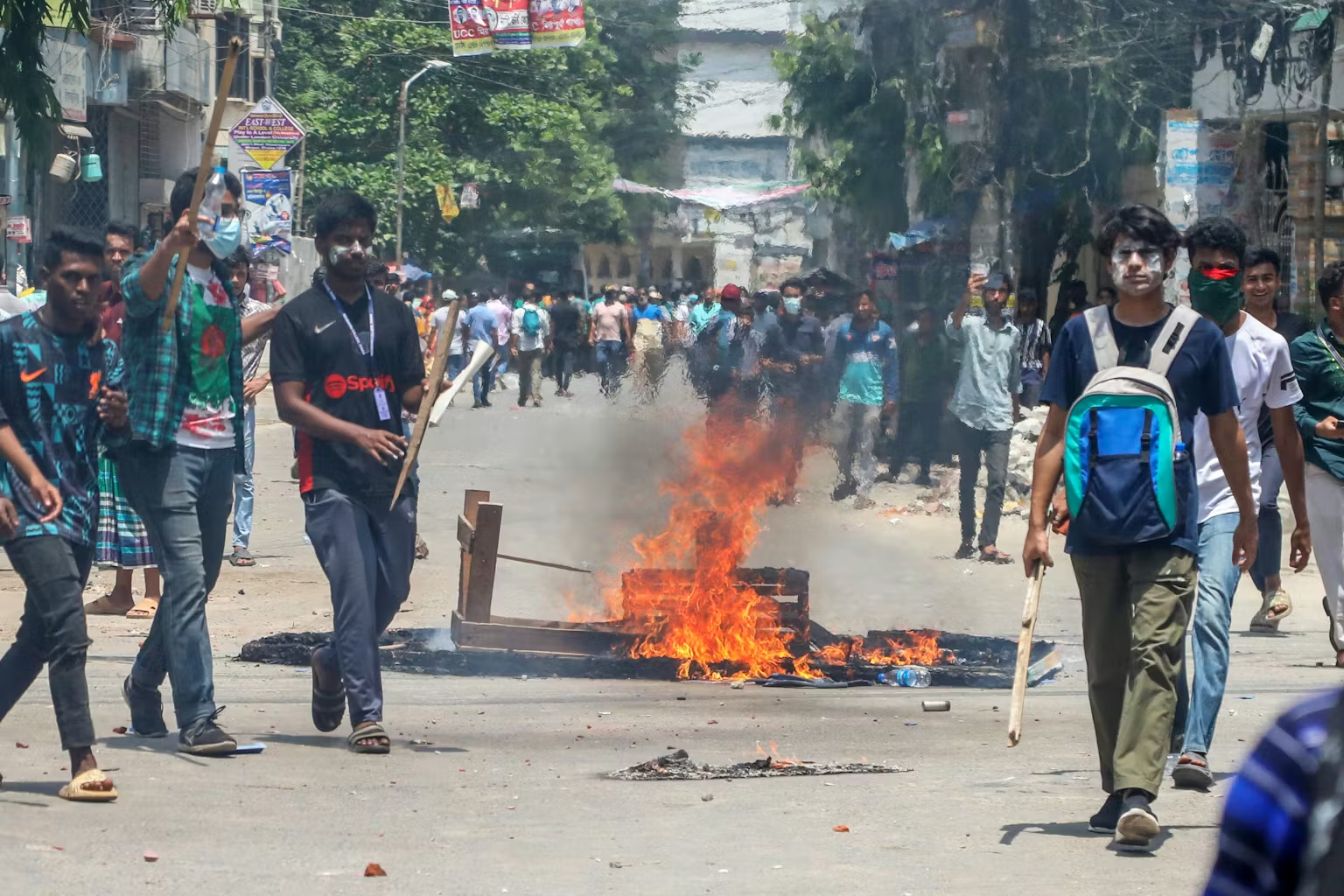In the 21st century, India’s new edge in defence technology is revolutionising the defence sector and making military forces smarter and more agile. With a focus on self-reliance under the “Aatmanibhar Bharat” initiative, India is leveraging innovations in artificial intelligence, Robotics, Cyber Warfare and Advanced Manufacturing to bolster its capabilities. India is enhancing its capabilities to address modern security challenges and create deterrence
Artificial Intelligence in Defence
Artificial Intelligence is widely acknowledged to be one of the most significant technological game changers in intelligence gathering, autonomous weapon systems, surveillance, and decision-making. India is strategically pushing to use AI to enhance its defence capability for faster and more accurate decision-making, reducing human errors and improving operational efficiency that can handle counter-evolving security challenges1. AI for defence-related applications, including AI-based intercept management and predictive maintenance systems, decision intelligence and target tracking and identification. India Armed Forces and defence forces have launched 75 AI technologies during the first-ever symposium & exhibition2. In 2024, the Department of Defence Production has earmarked approximately $12.6 million annually for AI projects3.
Unmanned Systems and Robotics
Rapid advancement in autonomous defence systems and technologies is becoming an important component of military superiority. The Indian Armed Forces are increasingly adopting unmanned aerial vehicles (UAVs) for reconnaissance, combat, and logistics support. Indigenous drones like the DRDO’s Rustom and the privately developed Tapas BH-201 are being tested for high-altitude, long-endurance missions4.
The cutting edge of Robotics is also gaining traction, with applications in bomb disposal, reconnaissance, and logistics. ‘NETRA’ is a mini UAV surveillance application; it’s an optional thermal imager for night operations5. The DRDO’s Daksh is a mini battery-operated tracked vehicle with a multi-degree-of-freedom manipulator arm for extracting suspected objects with a telescopic manipulator arm, especially in the battlefield. It will be more beneficial6.
Cyber Warfare and Electronic Defence
Cybersecurity and Electronic warfare are playing a significant role in helping to detect anomalies, counter intrusion and adapt communications protocols in real-time. In parallel, training and simulation planning are becoming major military assets from cyber threats7. The National Technical Research Organisation(NTRO) was created in 20048, and the Defence Intelligence Agency (DIA) were created in 20229, working towards strengthening India’s cyber defence Capabilities by investing in cutting-edge technologies and creating specialised cyber defence units for cyber threats10.
The Electronic warfare networked command control communications computers, intelligence, surveillance and reconnaissance and advanced sensor suites system, such as used in the Operation Sindoor, like drones, Rafale Fighter Jets and indigenous Tejas Aircraft, enhance India’s ability to disrupt the enemy communications and radar systems. IDRDO has also developed jamming systems like DRFM-based electronic warfare systems, which enhance military control of the electromagnetic spectrum and effectively neutralise enemy surveillance and targeting systems11.
Space-Based Defence Technologies
The Indian Space Research Organisation (ISRO) has been developing the Indian Data Relay Satellite System (IDRSS) satellites for better in-orbit crew communication as part of its Gaganyaan mission, which is India’s human spaceflight mission12. The DRDO report on their space technologies includes different technologies, such as Antennas, Control Systems, Directed Energy Weapons, Electronic Warfare, Free Space Communication, Image Processing, IoT Devices, MSDF, and Robotic Arm, etc13. The Network for Space Object Tracking and Analysis (NETRA) provides real-time guidelines of space assets, protecting satellites from potential threats14. With the increasing militarisation of space, India is investing in its space situational awareness and satellite-based surveillance to maintain strategic superiority in the region.
Advanced Manufacturing and Indigenous Innovation
In India, one of the impulsive advancements in defence manufacturing is additive manufacturing, like in 3D printing, and advanced materials are transforming defence production. The use of 3D printing allows for rapid prototyping and production of complex components, reducing costs and lead times for developing critical components such as missiles, UAVs (Unmanned Aerial Vehicles) and protective gear. The Indian Air Force has already adopted 3D-printed parts for aircraft maintenance, enhancing operational efficiency. India’s ability to smoothly evolve security threats while reducing dependency on strategically intensive manufacturing15.
India’s push for defence indigenisation and modernisation aims to reduce dependency on foreign arms and technology. India private firms included Hindustan Aeronautics Limited (HAL), Bharat Electronics Limited (BEL), Tata Motors Ltd, Mazagon Dock Shipbuilders Ltd (Mazagon) and Larsen & Toubro Ltd (L&T) along with private players such as Tata Advanced Systems and L&T Defence, are driving the development of advanced radar systems, missile technologies, and for the future -generation weaponry16.
India’s Technological Initiatives
The cutting edge of technology has witnessed a paradigm shift in the last decades, with continuous efforts to foster innovation and reduce dependence on imports. The Indian government is taking several steps for the defence organisation, and the private sector is laying the foundation for a robust indigenous defence ecosystem..
Innovations for Defence Excellence (iDEX) in 2018
Acing the development of innovative technology with Idex (ADITI) or the ADITI Scheme, a sub-scheme within iDEX, aims to support critical and strategic technologies such as satellite communication, advanced cyber technology, autonomous weapons, semiconductors, AI, quantum technology, nuclear technologies, and underwater surveillance for the advancement in the defence sector17. Also, the Innovations for Defence Excellence (iDEX) initiative, companies are leveraging advanced manufacturing the algorithms for next-generation. Such technologies are fostering indigenous research and development (R&D), enhancing India’s technology edge18.
Defence AI Council (DAIC) & Defence AI Project Agency (DAIPA) in 2019
The Defence AI Council (DAIC) was developed by NITI Aayog and the Ministry of Defence to guide AI projects in the defence sector. The cutting edge of Robotics is also gaining traction, with applications in bomb disposal, reconnaissance, and logistics. guidance to enable and effect the development of an operating framework, policy level changes and structural support for AI adoption, and the Defence AI Project Agency (DAIPA) has been created under the Chairmanship of Secretary DDP for enabling AI-based processes in the defence Organisation for the technological advancement19 it has already prepared a roadmap for the development of AI-enabled applications in the Defence Public Sector Undertaking, covering areas of Cyber Security, Surveillance, Training and Simulation, Predictive Maintenance, Multi-Sensor Data Fusion, etc.
DRDO’s Quantum & Directed Energy Leap
The Defence Research and Development Organisation (DRDO) has been strengthening its capabilities for strategic & defence applications. DRDO inaugurated the Quantum Technologies Research Centre (QTRC) in 2025 for Quantum communication systems, designed to provide Distribution techniques to enable ultra-secure communication and safeguard national security in the post-quantum era, spearheaded by the Scientific Analysis Group (SAG) and DRDO20. Recently, DRDO’s Industry-Academia Centre of Excellence at IIT Delhi has demonstrated free-space quantum secure communication. Also, the Private firms have bolstered these efforts, positioning India as a contender in next-generation warfare technologies.
Innovative Private Sector
Over the two and a half decades, the private firms have played a pivotal role in this shift. The defence industry was opened to private participation, has emerged as a critical partner in India’s defence modernisation, especially after the launch of Make in India in 201422. Major private firms like Tata Advanced Systems, Larsen & Toubro, and Bharat Forge are increasingly involved in high-value defence contracts, including components for fighter jets, missile systems and unmanned aerial vehicles. Startups like Tonbo Imaging (intelligence inputs for securing precision with the use of advanced technology) and ideaForge have developed world-class thermal imaging and UAV technologies. The strategic partnership under the ‘Make in India’ is also reducing the country’s dependence on foreign defence imports. And the role continues to evolve with the future. focusing on autonomous, AI-driven. Public-private partnerships (PPPs) have been instrumental in scaling production and fostering innovation, with private firms contributing to projects like the Tejas Light Combat Aircraft and the Arjun Main Battle Tank23. In recent years, 31 satellites under the Space-Based Surveillance (SBS-3) programme marked the first time private players have built satellites for use24.
Challenges
Despite the achievements, India faces several challenges in achieving complete self-reliance in defence technology.
Import Dependence & Technology Denial
Early years, India continuously reduced its reliance on foreign defence equipment, made significant progress in developing indigenous defence technologies, but it still depends on foreign sources for certain critical defence systems, such as advanced fighter jets, air defence systems and weaponry systems, which affected the country’s strategic autonomy25. Ensuring that India can completely meet its defence requirements domestically remains a major challenge. The defence procurement cycle is slowed despite advancements in indigenisation, and India continues to face limitations in developing high-end defence technology. In 2023, 36% of defence equipment was allocated, but still a technological capacity gap in the overall process, with their huge difference between contract approvals and equipment delivery.
Cybersecurity & Digital Vulnerabilities
As warfare evolves, India’s cyber and digital vulnerability system is still developing, limiting its ability to counter advanced digital threats. India’s Cybersecurity Strategy is in a transitional phase- expanding rapidly, still in its infancy, and lags in building a cohesive defence architecture to protect critical systems from cyber threats. India must prioritise a unified cybersecurity policy, enhanced public-private partnerships, and advanced training to safeguard its defence ecosystem against emerging digital threats. The lack of a Cyber Offensive Strategy emphasises defensive cybersecurity. The Cutting edge of Cybersecurity Infrastructure faces insufficient investment. There is a need to constantly update cybersecurity polices for flexibility and the ability to change technologies and threats26. And the main concern must be addressed the skills gap limits the ability of organisations to manage cyber issues. Steps should be taken towards education, training and certification to build a workforce to deal with modern cyber advances27.
Budget Constraints & Bureaucratic Hurdles
The major lacunae are failure to commit funds, delays in finalised of the plan by the MoD and the Ministry of Finance are largely due to weaknesses in the existing financial system and how the plans are prepared. The existing financial system of the MoF is bound to allocate resources annually, which does not commit an assured flow of resources to defence on a long-term basis28. India continuously faces budgetary constraints and prioritisation issues, delays and deployment of critical infrastructure and enhancements. There is a need for greater collaboration between defence research organisations, industry and academia to develop cutting-edge technologies. While progress has been the technological ecosystem is still not a robust as in more advanced defence sectors29.
India’s Vikshit Bharat 2047 Vision
The articulation vision strengthens public-private Partnerships are accelerating defence innovation through collaboration between Defence Public Sector Undertakings (DPSUs), private entities, and emerging startups. In the position among the top 5 global exporters of high-quality defence equipment under the Innovation for Defence Excellence initiative, companies are leveraging advanced manufacturing excellence. Such synergies are forged through innovation, R&D in the global market30.
| Viksit Bharat 2047 (Atmanirbhar, Agrani and Atulya Bharat) |
| Self-reliance 2032 | Major exporter 2038 | Global Leader 2045 |
| Enhance defence production, capabilities, indigenous innovation, reduce dependence and foster innovation in domestic R&D and manufacturing excellence. | Quality Defence Equipment and technology. Expanding international partnerships, meeting global standards in international markets.. | To become a world leader in developing and deploying cutting-edge technologies. To encourage collaboration between industry, academia and government, and drive substantial investment in futuristic R&D |
Table 1.1 The articulated vision into specific objectives that collectively forge a strategic pathway in cutting-edge technologies. Sources : Compiled from various sources of data on Strategic Analysis in India, cutting-edge defence technologies
Conclusion
India’s new edge of technology is reshaping India’s defence landscape, enhancing indigenous innovation on a global scale for the international market. Continued innovation reduces dependency, towards becoming a major defence manufacturing hub, enhances India’s competitive edge and also the strategic partnership with the global power will be instrumental in securing its national security objectives. With sustained efforts in advanced technological growth innovation, self-reliance can play an important shaping national security and geopolitical standing in the upcoming era.
Disclaimer: The views and opinions expressed by the author do not necessarily reflect the views of the Government of India and Defence Research and Studies

References
- The New Age of Defence, Department of Defence Production, GOI.
- Raksha Mantri launches 75 Artificial Intelligence products/technologies during first-ever ‘AI in Defence’symposium & exhibition in New Delhi, Ministry of Defence, PIB, 11, July 2022.
- Vivek N.D, AI and Indian Defence: Enhancing National Security Through Innovation, The Diplomat, 1 October 2024
- Coimbatore-Based Private Firms Working With DRDO On An Indigenous Engine For TAPAS Drone
- 5 DRDO Report on Robotics.
- ibid
- Ramanpreet Kaur, Dusan Gabrijelcic, Tomaz Klobucar, Artificial intelligence for cybersecurity: Literature review and future research directions, ELSEVIER IN 2023
- National Technical Research Organisation, National Portal of India
- D.I.A (Defence Intelligence Agency) – all you need to know, DDE IN 7 July 2025
- The Role of Science and Technology in India’s Defence Sector: Paving the Path to Self-Reliance, Scientia tutorials.in
- India advances in defence technology: achievements and strategic implications
- KARTIK B., ANTARA V., KARTHIK N., SHIMONA M., YOGESH J., Emerging Technologies and India’s Defence Preparedness, ORF, 5 MAY 2023
- Space Technologies, Defence Research & Development Organisation, GoI
- India’s Strategic Counter-Surveillance Initiative, India Strategic, 14 June 2025
- The Role of Advanced Manufacturing in Strengthening India’s Defence Sector,By TimesTech -April 17, 2025
- Top 5 Defence Stocks to look for in 2025, BIGUL, 27 JUN,2025
- New Opportunities in India’s Defence Sector, S&R, 30 June 2025
- The Role of Advanced Manufacturing in Strengthening India’s Defence Sector, Times Tech, 17 April 2025
- Enhancement of Capabilities of AI Technology, MoD
- DRDO inaugurates Quantum Technology Research Centre to further bolster indigenous quantum capabilities for strategic & defence applications, Ministry of Defence, 27 May 2025
- DRDO, IIT-Delhi demonstrate free-space quantum secure communication over 1 km, THE HINDU, 17 June 2025
- INDIAN DEFENCE NEWS,How Private Firms Are Leading the ‘Make in India’ Shift in Defence, 16 March 2025
- Chethan Kumar, How private firms are arming our forces, The Times of India,17 May 2025
- Amit Cowshish, India’s Defence Industry: From Dependence Towards Self-Reliance: International Ramifications, Indian Foreign Affairs Journal Vol. 17, No. 1-2, January–June 2022, 118-131
- India’s Cyber War: Strategy Amid Rising Threats, DSA, 3 March 2025
- Ram Yash, Cybersecurity Challenges and Digital Infrastructure in Viksit Bharat, Research Gate, April 2025
- Laxman Kumar Behera, India Defence Economy, Routledge India, London, 29 October 2020, pp.2
- India’s Defence Industrial Sector Vision 2047, KPMG, May 2025
- The Role of Advanced Manufacturing in Strengthening India’s Defence Sector, 17 April 2025








